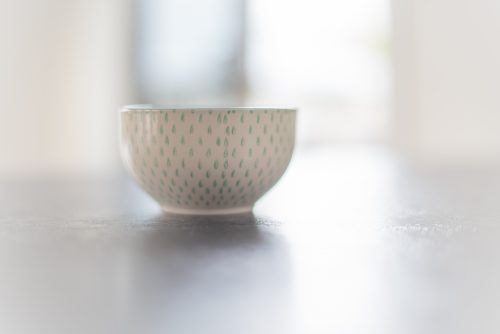Do clogged ducts have you gripping your breast in pain? Epsom salt for clogged ducts has been widely held as an effective remedy for nursing moms. By combining Epsom salt with warm water, you may be able to get relief from your clogged ducts in as little as a few hours.
How Do You Use Epsom Salt For a Clogged Milk Duct?
Whether you’re interested in 12 Most Frequently Asked Questions about Breastfeeding or How To Get A Deeper Latch When Breastfeeding, one thing is for certain… breastfeeding can leave us searching for answers! Thankfully, Epsom salt provides an answer to at least one common breastfeeding conundrum.
Epsom salt can be used in a variety of ways to unclog a milk duct.
The first and most popular way is to use a Haakaa. This is a hands-free miniature breast pump that relies solely on suction to naturally pull milk out of the breast. It isn’t electric, can fit in your hand, and is totally portable. Many Haakaa pumps come with a stopper to prevent milk from spilling out.
So, how can you use a Haakaa or similar breast pump to soak your breast in Epsom salt?
Consider the following:
- Fill your Haakaa pump, or similar device, at a ratio of 8 ounces of warm water to 2 tsp of Epsom salt. When filling your Haaka with water, be sure to use water that is as warm as you can stand, but be careful not to burn your skin. Know that you may need to adjust the amount of water and Epsom salt to the amount of fluid that your Haakaa can hold.
- Attach the Haakaa pump to your breast, ensuring that your nipple is fully submerged in the warm salty water.
- Keep the nipple submerged in the Epsom salt water for about 5-10 minutes, no more than 2-3 times per day.
Note: If you have nipple damage, the Epsom salt may burn a little. On the plus side, Epsom salt has healing properties that may help certain types of superficial nipple damage.
How to Use Epsom Salt For Clogged Ducts (Without a Haakaa)
Though Haakaa pumps are relatively cheap and are convenient to use, you can still soak your breasts in Epsom salt without using a Haakaa.
To do so, try filling a small and relatively shallow bowl with warm water and Epsom salt. Remember to keep the ratio at 8 ounces of warm water to 2 tsp of Epsom salt. Lay face down over the bowl and center the affected breast over the bowl. Soak your breast in this position 5-10 minutes a day, no more than 2-3 times a day.
Though uncomfortable, this is a way for you to soak your breasts in Epsom salt without needing to purchase a Haakaa breast pump.

How Does Epsom Salt Pull Out Clogged Duct?
Epsom salt works in tandem to empty clogged milk ducts by reducing swelling and inflammation while warm water works to liquefy clogged milk and cause it to easily escape the nipple.
When milk ducts are clogged, the blockage can be caused by fat from your milk. The warmth of the water combined with the anti-inflammation properties of the Epsom salt work to melt the fat and expel milk from the site of blockage. Thus, warm water and Epsom salt are a powerful duo that can help alleviate the pain associated with clogged ducts.
Lavender Epsom Salt Clogged Duct
If you’re wondering if lavender Epsom salt might work as well as plain Epsom salt does, there are a few things you’ll want to consider.
First, a scented Epsom salt might affect the container in which you place it and might be difficult to remove. For example, putting a lavender scented Epsom salt in your Haakaa may cause the Haakaa to smell, and maybe even taste, of lavender for a while afterward. This is not ideal if you plan to use the Haakaa to expel milk for your baby to drink.
Furthermore, you’ll want to consider the sensitivity of your own skin. Though scented Epsom salts aren’t likely to irritate most skin types, there are some that might see a reaction from this. And because the nipple is one of the most sensitive and delicate areas of the body, we recommend you simply use plain Epsom salt for treating a clogged milk duct.
How Do You Soak Your Breasts in Epsom Salt?
As previously detailed in this article, you will want to use a Haakaa or small bowl to soak your breasts in Epsom salt.
A Haakaa is a more comfortable option, however, if you only have a small bowl on hand, you can still unclog your milk ducts using the Epsom salt and warm water method.
If using a Haakaa, remember to fill the Haakaa enough so that you are able to fully submerge your nipple in the Epsom salt solution. Bear in mind, though, that you’ll still need to connect the Haakaa to your breast, so be sure not to overfill the Haakaa as this could end up making a mess.
For detailed step-by-step instructions on how to soak your breasts using a Haakaa or small bowl, refer to the above section titled “How Do You Use Epsom Salt For a Clogged Milk Duct?”.
How Long Should I Soak My Breast in Epsom Salt?
How Long to Soak Breast in Epsom Salt?
You should soak your breast in Epsom salt anywhere between 10-15 minutes. This should be long enough to break up any clogs and get the milk flowing free. Remember, however, that it may take you doing this 2-3 times per day for several days depending on how severe the blockage is. Be patient and consistent, but also be sure to book an appointment with your local healthcare provider if pain and lumps persist.
What Does Epsom Salt Do to Breast Milk?
Epsom salt remediates inflammation and swelling caused by lodged milk in a duct. The warm water that you mix the Epsom salt with works to liquify any fat in your clogged milk that may be causing the blockage to become worse. Thus, combining both the warm water and the Epsom salt provides a powerful and effective remedy to help combat clogged milk ducts.
Will an Epsom Salt Bath Dry Up Breast Milk?
In general Epsom salt is hailed as an important remedy for relieving clogged milk ducts, but little is known about Epsom salts’ effect on breast milk.
In some cases, using too much Epsom salt for a variety of purposes can lead to unwanted side effects.
With this in mind, we recommend that you use Epsom salts sparingly and only when you are experiencing clogged ducts while breastfeeding. Remember also to only use Epsom salt soaks for your breasts for the amount of time we’ve recommended. Do not exceed 10-15 minutes per breast for any more than 2-3 times per day.
Can I Pump After Epsom Salt Bath?
Yes, you can pump after an Epsom salt bath. However, if you notice changes to your milk supply, if it feels painful, or if you experience anything out of the norm when it comes to your pumping session, you may wish to consider forgoing an Epsom salt bath prior to pumping.

Does Epsom Salt Help Mastitis?
Yes, Epsom salt can help with mastitis, but it isn’t a “magic pill” that works for all women. Because mastitis is inflammation of the breast tissue, Epsom salt may help unclog any cogs that are represented, but this is not a guarantee. Mastitis can sometimes present itself along with a fever and infection, so antibiotics are often prescribed to treat the condition. If you suspect you may have mastitis, you’ll want to notify your local healthcare provider as soon as possible.
Symptoms of mastitis are as follows:
- Skin Redness
- Wedge Shaped Pattern on Breast
- Feeling Generally Ill
- Fever
- Breast Lumps
- Thicker Breast Tissue
- Pain Whilst Breastfeeding or Otherwise
- Breasts Feeling Warm to the Touch
Substitute For Epsom Salt For Clogged Milk Duct
It is important to understand that not all clogged milk ducts require Epsom salt. In fact, many healthcare providers suggest you massage your breasts and breastfeed–or pump–as often as possible to help relieve your clogged milk duct.
You may also consider a saline solution for unclogging your milk ducts. To do so, use the methods mentioned above using either a Haakaa or a small bowl, but use regular table salt or sea salt instead. You’ll need to do ½ tsp in 8 ounces of water about 7-8 times daily for this to be effective.
Some have also reported success using sunflower lecithin supplements to unclog milk ducts.
What Do I Do If My Clogged Milk Duct Won’t Unclog?
If you’ve tried all of the aforementioned methods for unclogging milk ducts to no avail, it may be worth it to schedule an appointment with your doctor to get to the bottom of what is really going on. The sooner you do this the better, as leaving an unclogged milk duct unchecked may evolve into mastitis.
Epsom Salt For Clogged Milk Ducts Really Works!
Epsom salt for clogged milk ducts can work when combined with warm water. We recommend you use the Haakaa for a simple and mess-free option, but you may lay face down over a small bowl to get the job done. Be sure not to overdo soaking your breasts in the Epsom salt solution, as using too much Epsom salt can sometimes have negative outcomes on health. We hope this information keeps you happily nursing and pain-free!
Lynn
Lynn is a freelance writer, a wife, and a mother of two beautiful kids. Lynn started Infant Empire with the aim of making parenting easier for fellow mums and dads. She believes the parenting tips provided here will be of great help to all parents.Recommended Reading
Top 7 Best Nursing Tanks For Large Breasts (2022 Reviews)
Nursing tanks are not very common in the market so nursing moms face challenges when choosing the best nursing tanks for large breasts...
What to Wear During Labor: Things to Pack in a Hospital Bag For Delivery
Grab a pen and paper and settle in. We’ve got the details you need to make sure you’re fully prepared for the big day!
Oat Milk For Breast Milk Supply
In this article, we will explore why oatmeal and oat milk are often considered beneficial when it comes to breast milk production.
Best Nursing Bras For Small Breasts to buy in (2022)
In some women, breasts remain small even when nursing. However, this does not mean that you do not struggle to find the best nursing bras for small breasts.
Can Pregnant Women Drink Hot Chocolate?
A lot of cozy caffeinated drinks have gotten a bad rep, so you may be wondering, “Can I drink hot chocolate while pregnant?”
Top 7 Best Maternity Leggings not see through for work
it is usually difficult to find the best maternity leggings not see through, perfect fit, comfortable, and makes you feel and look great.



Leave a Reply